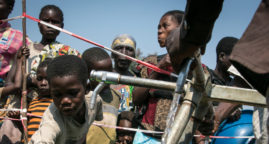Four Decades of Cross-Mediterranean Undocumented Migration to Europe: A Review of the Evidence
Report published on IOM website on 2017
Description
The report reviews available evidence on trans-Mediterranean irregular migration to Europe along various routes going back to the 1970s, particularly on the magnitude of the flows, the evolution of sea routes to Southern Europe, the characteristics of migrants, the extent to which one can separate between economic and forced movements, and mortality during the sea journey. The report also reflects on the causes of the so-called migration crisis – a record-high number of undocumented arrivals by sea between 2014 and 2016 – and the reasons for the substantial decrease in numbers in 2017. It concludes by identifying future data and research needs.
Table of contents
- Executive summary
- 1. Introduction
- 2. How much is known about trans-Mediterranean undocumented migration to Europe?
- 2.1. Flows
- 2.2. Deaths at sea
- 2.3. Characteristics of migrants
- 3. Changing sea routes to Southern Europe
- 3.1. The western route
- 3.2. The central route
- 3.3. The eastern route
- 4. Europe’s Mediterranean shore, the world’s most lethal border
- 5. Seeking protection or employment?
- 6. Turkey and Libya are not the same
- 7. By way of conclusion: For a data collection and research agenda
- 7.1. Collecting the experience of migrants
- 7.2. Measuring the impact of measures taken by governments and non-governmental actors
- 7.3. Assessing the situation of migrants stranded in Turkey and Libya
- Appendices
Related Articles
DR Congo: UN warns of spike in displacement amid funding shortfall
03/09/2018. The United Nations migration agency is hoping that the upcoming donor pledging conference for the humanitarian crisis in the Democratic Republic of the Congo (DRC) will generate more financial support to cope with a spike in the number of people displaced by violence.
Indonesia earthquake and tsunami: Malteser International supports reconstruction of health facilities
10/05/2018. Malteser International has made emergency funds available to deliver essential relief materials to the surrounding communities.
Humanitarian corridors are helping change how Europeans see refugees
10/23/2017. An innovative private-public initiative involving faith-based communities and government is facilitating refugees enter Europe since 2015.





